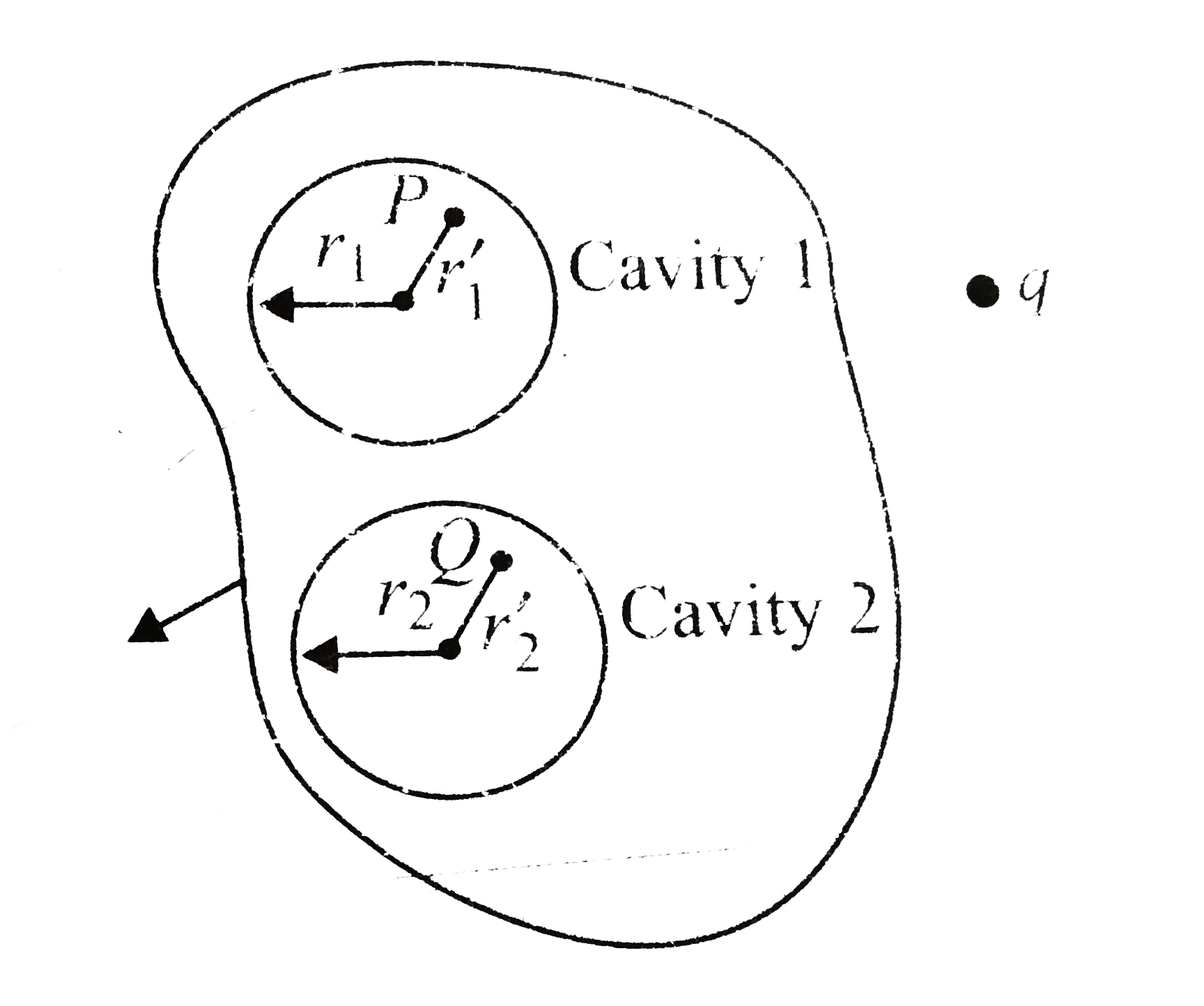Figure shows a conducting sphere with a cavity. A point charge is placed inside cavity, and is placed out side the sphere is electric field due to charge induced on surface of cavity. is electric field due to charge induced on outer surface of sphere and is net field at any point. Two closed gaussian surface & are also drawn in the figure. 
for surface is zero
for surface is
for surface is
for surface is
The correct Answer is:A, B, C, D
Charge induced on inner surface of cavity
Charge induced on outer surface of sphere
Net charge enclosed by is zero
Net charge enclosed by in
Topper's Solved these Questions
Similar Questions
Find the electric field at (A) (a) due to q, (b) due to charges induced on the inner surface of the shell and (c ) due to charges induced on the outer surface of the shell (Fig. 22-41).

View SolutionWhy is the direction of the electric field due to a charged conducting sphere at any point perpendicular to its surface?
View Solution
Knowledge Check
If charge q is induced on outer surface of sphere of radius R, then intensity at a point P at a distance S from its centre is
Ainversely proportional to (S+R)2Binversely proportional to R2Cinversely proportional to S2Ddirectly proportional to S2If charge q induced on outer surface of sphere of radius R, then intensity at point P at distance S from centre is
Ainversely proportional to (S+R)2Binversely proportional to R2.Cinversely proportional to S2.Ddirectly proportional to S2.A point charge q1 is placed inside cavity 1 and another point charge q2 is inside cavity 2. A point charge q is placed outside the conductor. For the situation described above, answer the following questions.

The charge on outer surface of the conductor would beAQ+q1+q2 and nonuniformly distributedBQ+q1+q2 and its uniform or nonuniform distribution depends upon locations of q1andq2CQ+q1+q2 and would be distributed uniformlyDQ+q1+q2 and the distribution depends upon the locations of q1,q2,andq.
A point charges + Q is placed in the vicinity of a conducting surface Draw. The electric field lines between the surface and the charges.
View SolutionA point charge +Q is placed in the vicinity of a conducting surface. Draw the electric field lines between the surface and the charge.
View SolutionInside a neutral hollow conducting sphere of radius X and centre C, a point charge q is placed as shown in the figure. Another point charge q1, is placed outside the sphere at distance d from centre. The net- electrostatic force on charge q placed at the centre is K=14πε0

View SolutionA point charge q is placed with in the cavity of an electrically neutral conducting shell whose outer surface has spherical shape. Then,

View SolutionSTATEMENT -1: A point charge q is placed in front of a solid conducting sphere. Electric field due to induced charges at the centre of sphere is zero .
 .
.
STATEMNT -2 : Electric field at a point inside the solid body fo conductor is zero.
View Solution

